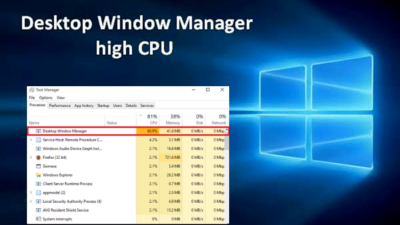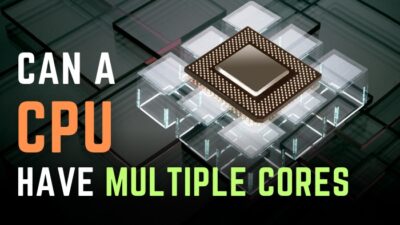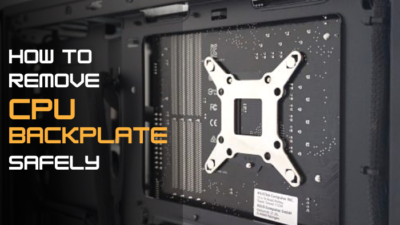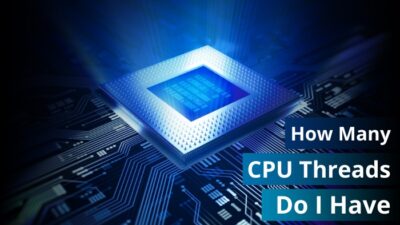Working in a noisy environment with enormous workloads is frustrating, right? You can’t focus on the current work, much alone finish it.
The artifacts issue does the same to your PC. It creates visual or audio distortions that impact digital media, gaming experience, and rending works heavily.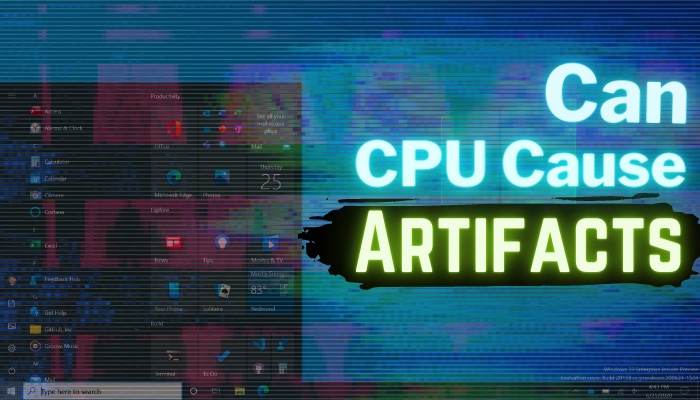
Mainly, your GPU is responsible for the PC Artifacting. But can your CPU do the same? You will get the answer in this article.
So without further ado, let’s jump in.
Can your CPU Cause PC Artifacts?
Yes, a CPU can cause PC artifacts. But it shows different signs than GPU Artifacts. However, CPU Artifacts are rare issues that occur in one among thousands of PCs. CPU artifacts typically happen when your processor can’t process the data and instructions correctly.
If you overclock a CPU without overclocking the AGP bus or Video card and use the stock cooler, you may face artifacting in your PC.
However, it can outright crash your computer before it has a chance to cause artifacts in a game.
What Do CPU Artifacts Look Like?
Usually, your PC faces different graphical and performance issues for CPU Artifacts. Flickering or distorted images, choppy or distorted sound, system lag, unresponsiveness, etc. are the common symptoms of CPU artifacts. Even so, you can’t be 100% sure it’s CPU artifacts.
Because the symptoms can also indicate RAM or GPU artifacts in your PC. In this section, I will show you some signs you may see during CPU artifacts. It will help you to detect the case quickly. 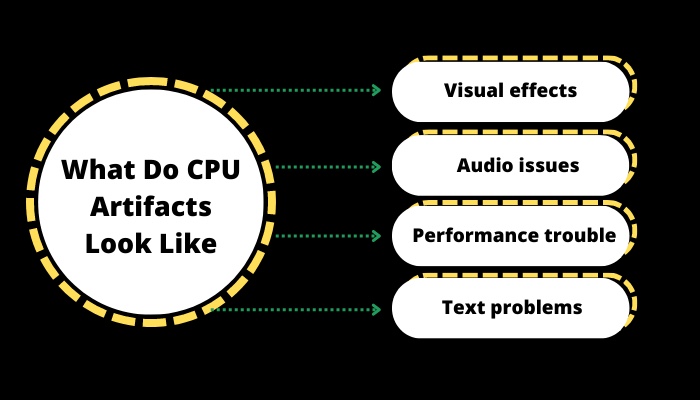
Here are some common effects of CPU artifacts:
- Visual effects: CPU artifacts may show flickering or distorted images, tearing, or jagged edges on your monitor. In extreme situations, it can completely freeze or crash your system.
- Audio issues: You can face choppy or distorted sound, crackling noises, delayed or dropped audio output, etc. for CPU artifacts.
- Performance trouble: Processor artifacts cause system lag, unresponsiveness, or slow loading times for applications or software.
- Text problems: You will see blurred or fuzzy text, missing or corrupted characters, or unusual font on your monitor or laptop screen.
These are some effects of CPU artifacts you will see while using your PC. However, you may face similar symptoms in GPU artifacts.
GPU artifacting in videos and images is similar to the CPU artifacting. Then how can you differentiate between the two? To get the answer, read the following section.
What’s the Difference Between CPU and GPU Artifacts?
Usually, GPU and CPU artifacts have similar symptoms, like screen flickering or system instability. However, the root cause of the issue is often different for both hardware. You also have to apply different solutions for CPU and GPU Artifacts.
This portion will show you the difference between the CPU and GPU Artifacts. It will help you to separate the CPU Artifacts from the GPU.
These are the key differences between CPU Artifacts and GPU Artifacts:
| Aspect | CPU Artifacts | GPU Artifacts |
|---|---|---|
| Affected Devices | Central Processing Unit (CPU). | Your Graphics Card (GPU). |
| Primary Cause | Overheating, Not changing thermal paste, overclocking without proper cooling, and faulty power supply. | Overheating, outdated motherboard, overclocking, old driver, etc. |
| Effects | Visual, audio, performance, or text artifacts. | Visual artifacts, such as screen tearing, texture flickering, or pixelation. |
| Impact on your PC | System crashes, freezing, or slow performance. | FPS drops in games, reduced graphics quality, or game crashes. |
The differences gave you a glimpse of the GPU artifacting. If you want to know everything about the GPU artifacting, read our article for further information.
Mostly, overheating or outdated hardware causes both types of artifacts. And you should upgrade the hardware or adjust the system to prevent further issues in both cases.
How to Fix Possible CPU Artifacts
Mainly CPU artifacts cause when you run your PC at high temperatures. So first, you need to reduce the temperature of your PC. Also, you can update your driver and reduce the workload of your PC to solve CPU artifacts. But when this problem remains, you should change your hardware.
In this portion, I will show you some tips and tricks to fix possible CPU artifacts on your PC. Let’s see.
Here are some tips and tricks to solve CPU Artifacts:
- You must check your PC’s temperature using software tools like HWMonitor or Core Temp. If your CPU is running too hot, clean your computer’s fans and vents, or upgrade your cooling system.
- You should close unnecessary applications, reducing the resolution or graphics settings of graphics-intensive applications to reduce CPU workload. It will remove Artifacts.
- Outdated drivers can also cause CPU artifacts. So you should always install the latest versions.
- Stress testing software like Prime95 or AIDA64 can help identify CPU stability issues. Run a stress test and monitor your computer for instability or artifacts.
- If your CPU is outdated or not powerful enough to handle your workload, consider upgrading to a faster or more efficient model.
As heat is the main culprit of CPU artifacts, you must know how hot is too hot for your CPU. It will help you determine if you need to connect extra fans to your motherboard.
FAQs
Can faulty RAM cause artifacts?
Yes, damaged RAM can cause artifacts in your PC. And RAM artifacts mainly make your PC slower while opening any program or exportation files.
What causes visual artifacting?
The primary causes of visual artifacts are temperature problems, cooling fan failure, incorrect graphics drivers, etc.
Do artifacts mean my GPU is dying?
Usually, not. But if artifacts keep recurring or always occur at a specific time, like after playing a game for 10 minutes, you should change your hardware.
Conclusion
In short, CPU Artifact is a rare issue on your PC. Typically, it happens for overheating, Not changing thermal paste, overclocking without proper cooling, and faulty power supply. CPU artifacts impact your PC in various ways, like visual, audio, performance, system crashes, or slow performance.
After finishing the article, I’m sure you got your answer. Comment, If you need any other info about your CPU. Peace!

